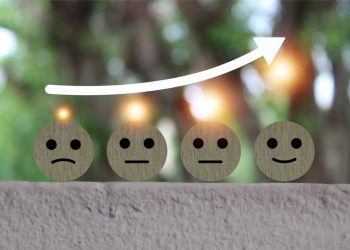 RISMEDIA, February 26, 2009-(MCT)-The secret to making perfect pancakes is obvious, according to Carla Connett: “The very simple way to put it is that they’re not made from a box or a mix,” explained Connett, owner of Hotcakes Cafe in Wilmette, Ill., and Green Bay Cafe in Winnetka, Ill. “The perfect pancakes are definitely made from scratch with fresh ingredients.”
RISMEDIA, February 26, 2009-(MCT)-The secret to making perfect pancakes is obvious, according to Carla Connett: “The very simple way to put it is that they’re not made from a box or a mix,” explained Connett, owner of Hotcakes Cafe in Wilmette, Ill., and Green Bay Cafe in Winnetka, Ill. “The perfect pancakes are definitely made from scratch with fresh ingredients.”
Connett gets asked all the time how to make great pancakes. Perhaps that’s because people are wild about pancakes and it’s her business. Or, maybe, there’s a sort of unease surrounding pancake-making, as though the production of this ancient quick bread is more a secret art than a teachable craft. Yet the experts are willing, eager even, to share their tips for working ’round a griddle.
Raise your expectations
“I think most people grew up with pancake mixes or pancakes served in coffee shops or short-order houses,” said Dorie Greenspan, a well-known baker and cookbook author. “They are always bigger and higher than the pancakes you make at home.
“Sometimes, I think that’s what people are striving for: a big, fat flapjack the size of a plate,” she added. “It’s pretty high, and there are three to a stack, and you can just imagine it with dripping pats of butter and maple syrup.
“That’s not my idea of a great pancake.”
For Greenspan, author of “Pancakes: From Morning to Midnight,” that kind of pancake has an artificial lightness of texture and lacks the full flavor that comes from using high-quality ingredients.
And Greenspan is not sold on the notion that the best pancakes are light as air.
“I think there are some pancakes that should be light and others that shouldn’t,” she said. “I don’t think there’s one texture that fits all. For instance, if you’re making an oatmeal pancake, I think you want a little texture and maybe even the pancake version of heft.
“Nobody wants a tough pancake,” she added, “but you want to be able to chew it and know what’s in it.”
Follow a recipe but be adaptive
Even a professional such as Greenspan reaches for a recipe when making pancakes. She wants to get just the right proportion of liquid and flour. That doesn’t mean she won’t improvise on a recipe. Greenspan will sometimes replace some of the flour with cornmeal or whole-wheat flour for a different taste and texture.
Go for the lift
The pancake is basically a batter bread cooked speedily on a griddle, in a skillet, even a hot stone in prehistoric times. No matter the recipe, you want an element of bubbly lift in each pancake. That can come from a number of sources: baking powder, baking soda and beaten egg whites. Potato starch is Ina Pinkney’s pancake secret. “We use some potato starch to stabilize the batter, and it’s lighter than flour,” confided Pinkney, known as Chicago’s “Breakfast Queen.” She calls her pancakes “heavenly hots” at her restaurant, Ina’s.
Make the batter at the last minute
All recipes for pancakes call for “dry” and “wet” ingredients. Pancake experts such as Greenspan recommend combining the dry ingredients in bulk in advance so you always have your own house pancake “mix” available. Stir in the wet ingredients right before cooking. If the batter sits too long, the flour will absorb too much liquid and thicken the batter.
Don’t overmix
“A couple of lumps are OK,” Greenspan said. “If you’ve done a good job of mixing the dry ingredients, you won’t have many lumps.” Too much mixing results in tougher pancakes.
Choose a good pan
Pans or griddles with heavier bottoms tend to heat more evenly and lessen the risk of burning the pancake. Greenspan prefers a nonstick pan so less oil is needed.
Use oil to grease the griddle
A flavorless oil in the pan will let the flavor of the pancake shine through, Pinkney noted. Butter has a tendency to burn. Also, don’t use too much oil, as it will create splotches instead of uniform browning. The first few pancakes on the griddle absorb most of the oil; the second batch is better.
Regulate the heat
Be flexible here, Greenspan warned, lowering or raising the heat depending on how hot your pan is.
“You have to play with the heat,” she said. “You want the griddle hot enough so when you ladle on the batter it will spread. But if the griddle is too hot, the pancake will set too quickly without spreading.”
Keep ’em small
“The trick is to make the pancakes small and use one of those flexible spatulas to turn them,” Pinkney said. “It’s better to make more of them and make them smaller because you’ll have better control over the turning.”
Turn at the right time
“Flip when you start to see several little bubbles in the batter,” advised Carla Connett, owner of Hotcakes Cafe in Wilmette and Green Bay Cafe in Winnetka. But be careful; the second side cooks more quickly. It’s OK to lift up the edges to peek at browning progress.
Be sparing with toppings
“When I see people drowning pancakes in syrup before tasting them, I can tell they are IHOP people,” Pinkney said. She prefers her customers to try their pancakes plain first so they can see how little syrup they really need.
Nor is Pinkney a big fan of maple syrup. She thinks the maple flavor overwhelms her heavenly hots pancakes. She serves a fruit compote instead.
Share pancake joy
“Pancakes are fun in every way,” Greenspan said. “They’re fun to eat. They’re fun to make. People love them.”
___
31 Ways to Dress Up a Pancake
1. Butter
2. Maple syrup
3. Confectioners’ sugar
4. Whipped cream
5. Creme anglais
6. Grand Marnier
7. Raspberry jam
8. Strawberry jam
9. Orange marmalade
10. Apricot jam
11. Major Grey’s chutney, pureed
12. Flaked coconut
13. Fresh mint
14. Fruit compote
15. Lemon curd
16. Sour cream and cornichon pickle
17. Caviar
18. Cranberry-orange relish
19. Hot fudge sauce
20. Rum-glazed bananas
21. Berry-cardamom sauce
22. Tomato salsa
23. Hoisin sauce and green onions
24. Bourbon-glazed bacon
25. Chopped peaches
26. Peanut butter and jelly
27. Applesauce
28. Honey
29. Broiled rum-glazed pineapple
30. Cocoa powder
31. Cinnamon
© 2009, Chicago Tribune.
Distributed by McClatchy-Tribune Information Services.










